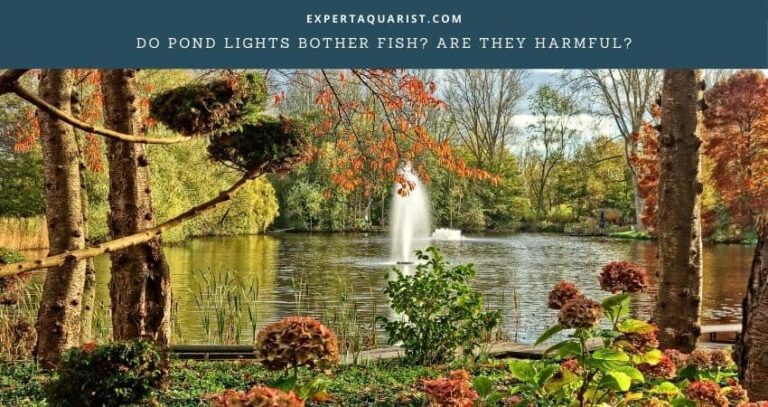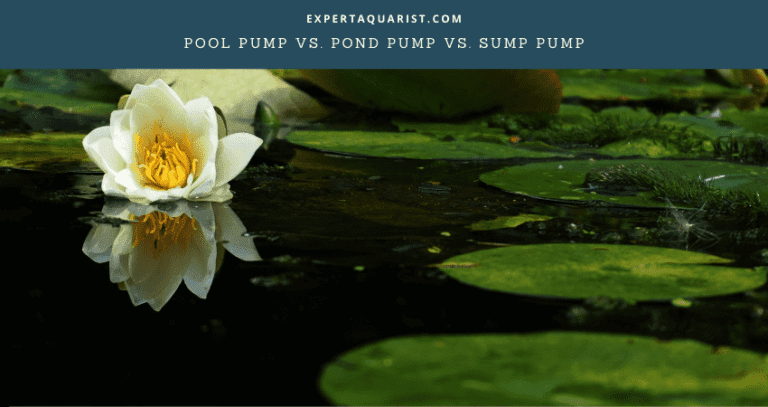Before the dire frost and snow of winter arrive, it is essential to take proper care of your surroundings. This will be all the more important if you have a pond in your backyard. To protect it from the horrors of the unforgiving cold, you need to winterize it.
Common practices for winterizing a pond include taking out the netting, cleaning out the pumps, filters, fallen leaves, and debris, scooping out the filth from water, adding pond heaters or de-icer, and finally doing something about the survival of fish.
This article is all about some straightforward, beneficial, and super easy to follow steps of winterizing ponds. So, let’s get straight to the procedure of how to winterize a pond.
Easy procedure of Winterizing a pond
When the weather gets cold, preparing your backyard pond for winter is one of the significant tasks. It is not tricky to winterize a pond; you just have to carry out some necessary measures. Let’s look into the step then.
Net the pond before winter
By placing a net over the pond, you can save a reasonable amount of time for winterizing; it is considered one of the best ways to reach that goal. When the leaves fall into the pond and decay during autumn, it can mess with the water and affect the fish and plants inside.
So, you should have a net prepared before that happens. It will catch any leaf and debris that falls into the pond.
You can roll out an appropriately sized bird net over the entire pond to keep the leaves from getting into the water.
You can pin down the net by merely placing rocks or bricks on the edges. After fitting the net on the pond, clean the top regularly with a blower if you may.
When winter knocks at the door, and the leaves are done falling, remove the bricks, pull out the netting and store it until next fall.
Clear out leaves and filth
If you haven’t installed a net during fall, then there must be leaves all over the pond by the time winter comes.
You need to clean up all the fallen leaves and filth as part of winterizing the backyard pond.
Leaves and organic debris release toxic gases while decaying, which affect the underwater ambiance. Your pond will be healthier if you remove all of these junks before winter hits.
You can do the cleaning with the help of a long-handled pond skimmer net to scoop out anything that got through the netting.

Give plants a trim
The next step of the procedure is to trim the plants around and in ponds that are not sturdy enough to put up with the cold.
Plants may break down through the winter and cause poor water quality, resulting in lowered oxygen levels in the pond.
So, if you have aquatic plants like a water lily, lotus, papyrus, etc. growing in your pond, you should lift the pots out of the water and cut off the vegetation.
You can also replace the plants in a plastic tub of shallow water and change the water frequently.
Filter and Pump
You can do two things for this step – Either you do not run the pump or keep it running throughout the winter.
If you have shallow water, then go with the first option. Simply turn off the pump and take it out of the water. Keep it warm and dry until you use it again.
And in case you have a deep pond that stays partially unfrozen during winter, then- Keep the pump running.
So, you will have to clean out the debris and gunk in the filter and pump and put it back in its place. Do the same thing with the filter.
Winter Care for The Fishes
Winterizing the pond is necessary for a reason- maintaining the well being of plants and fishes in winter. We’ve already talked about the plants, now let’s move forward with taking care of the fishes.
Healthy pond fishes [like koi] can survive below freezing if the water feature is deep enough. There is only one thing to do in that case, that is, to stop feeding them as soon as the temperature lowers.
Fishes do not eat much and go into a semi-hibernation state in cold winter. If you put so much food in water, it may result in issues underwater.
Since fish don’t have the appetite which they usually have any other time of the year, you will find a lot of uneaten food, and that uneaten food will decay and eventually turn into waste.
On the other hand, if you don’t have fish that are strong enough to survive the harsh reality of winter, then you’ll need to move them to an aquarium for the time being.
Adding water heater or De-icer
While this step is not obligatory, I still think it deserves an honorary mention.
If you live in an area with a freezing temperature, you can consider installing an additional de-icer or pond heater to keep the fishes’ water running and warm.
These handy appliances are neither expensive and nor do they require much space in the water.
Another plus point is that they use only a tinge of electricity. Simply place the pond heater beside the pump and plugin.
Electric pond heaters are of great use for keeping your pond from turning into a giant surface of the ice.
Additions while winterizing a pond
If you do not want to use a heater or de-icer but keep your pond from freezing, there is another way for you to do so. All you have to do is to keep the pond water moving.
For keeping the pond water moving, you’ll need air pumps. Air pumps can be added to the pond in Fall. They produce bubbles, which keep the water moving and restrain it from turning into ice. Another perk of having an air pump in your pond is that, along with the bubbles, a bit of toxic gas will come out and clean the water a bit more.
You can also add pond salt, which is quite beneficial for fish. Adding the salt will activate mucous slime coat production and reduce the effects of toxicity. It would be ideal for mixing 1-2 lbs of salt per gallon of pond water.
Some people like to add cold water bacteria in their ponds as an addition to winterizing.
Ponds naturally contain lots of bacteria that help break down fish waste and debris to keep the pond water crystal clear.
So, I would not recommend spending money on something that is already there.
Why should we winterize Ponds?
Natural ponds have natural ways to pass winter. But your backyard ponds need winterizing. Because-
- Man-made ponds have the equipment to keep the water ideal for fish and plants beneath. If the water freezes, they can be damaged.
- Backyard ponds carry more fish than lakes or ponds do. These fishes are more vulnerable to cold winters than the natural ponds’ ones.
- The ponds may have plants that need special care in cold weather. If not given proper care, the plants may not survive the season.
Who cares about winterization!
It is crucial to prepare the backyard pond and its habitats before blistering cold hits the area. This instructional article on how to winterize a pond can be a great help while you take preparation for the gruesome winter..
I hope you will find this piece of writing informative and useful. Stay warm, keep warm.






